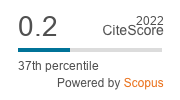Free will and decision making in aesthetic and moral judgments
Abstract
Before simple voluntary movements, the activation of a specific region of the cerebral cortex precedes the conscious intention to move. This is currently considered as a demonstration that the decision to act is not free, but that the brain decides and thereafter generates the illusion of the will. Besides other criticisms, this type of movement is known to be mostly automatic. More complex decisions like aesthetic or moral judgments are a better paradigm to address the problem of the neural correlates for human choices and the freedom of the will. Aesthetic judgments are correlated with an activation of cerebral areas, which are connected to rational decision-making and are also involved also in other kinds of evaluations. Moreover, the timing of cortical activation shows that aesthetic judgment requires explicit and intentional reasoning. Moral judgments are correlated with the activation of cerebral areas, in which specific rational and motivational/emotional elements are processed. The subject performing such an evaluation is the conscious self, who proceeds without a predetermined time limit, until he finds a satisfactory decision. The conscious and explicit nature of the evaluation suggests that the final decision cannot be mechanistically determined by the physical laws governing brain and body function.



